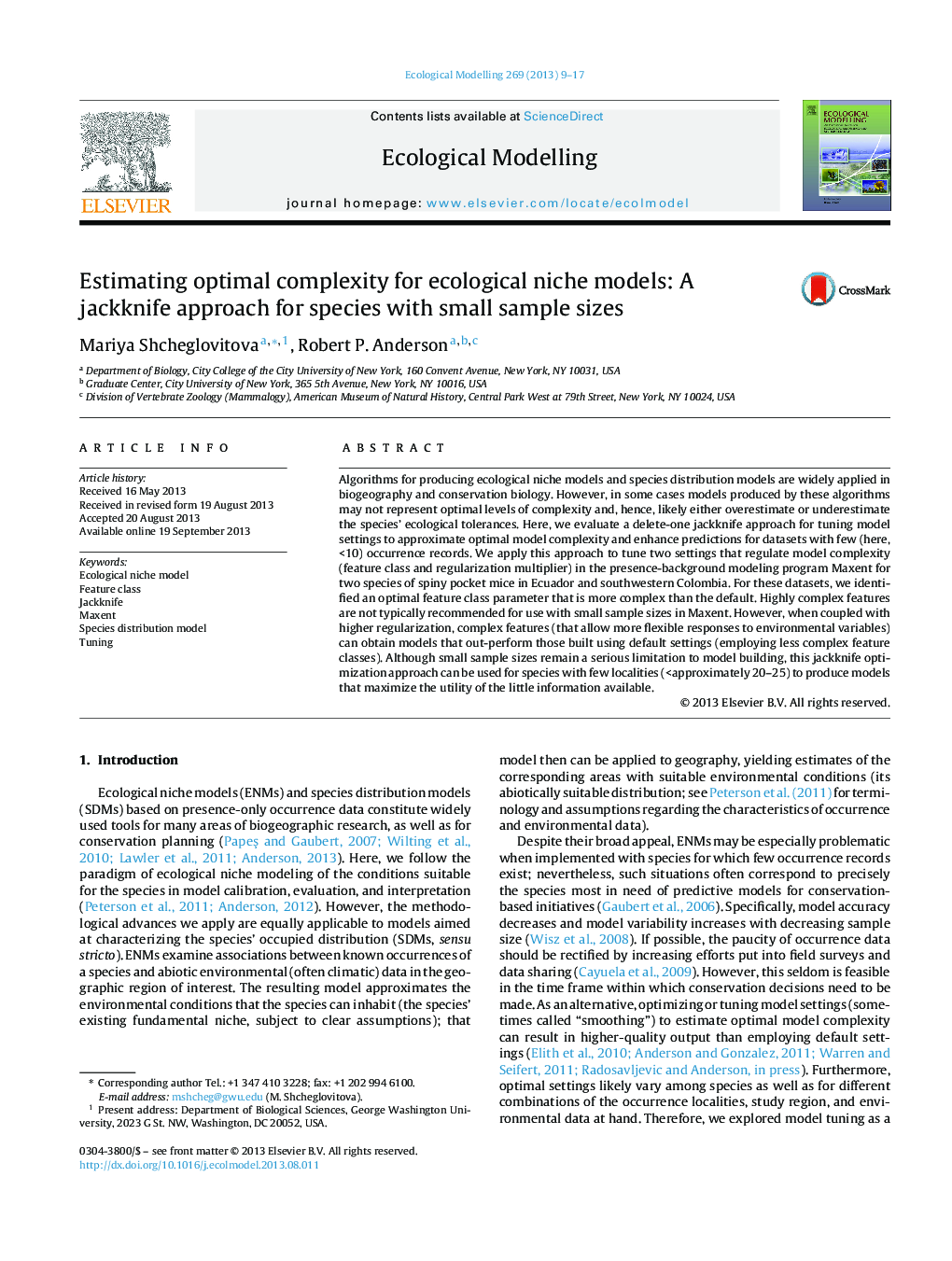| Article ID | Journal | Published Year | Pages | File Type |
|---|---|---|---|---|
| 4376039 | Ecological Modelling | 2013 | 9 Pages |
•We model the ecological niches of two rodent species with few occurrence records.•We use a delete-one jackknife approach to optimize model settings.•Complex settings with protection from overfitting led to better performing models.•Optimizing model complexity can lead to better models for species with few records.
Algorithms for producing ecological niche models and species distribution models are widely applied in biogeography and conservation biology. However, in some cases models produced by these algorithms may not represent optimal levels of complexity and, hence, likely either overestimate or underestimate the species’ ecological tolerances. Here, we evaluate a delete-one jackknife approach for tuning model settings to approximate optimal model complexity and enhance predictions for datasets with few (here, <10) occurrence records. We apply this approach to tune two settings that regulate model complexity (feature class and regularization multiplier) in the presence-background modeling program Maxent for two species of spiny pocket mice in Ecuador and southwestern Colombia. For these datasets, we identified an optimal feature class parameter that is more complex than the default. Highly complex features are not typically recommended for use with small sample sizes in Maxent. However, when coupled with higher regularization, complex features (that allow more flexible responses to environmental variables) can obtain models that out-perform those built using default settings (employing less complex feature classes). Although small sample sizes remain a serious limitation to model building, this jackknife optimization approach can be used for species with few localities (
